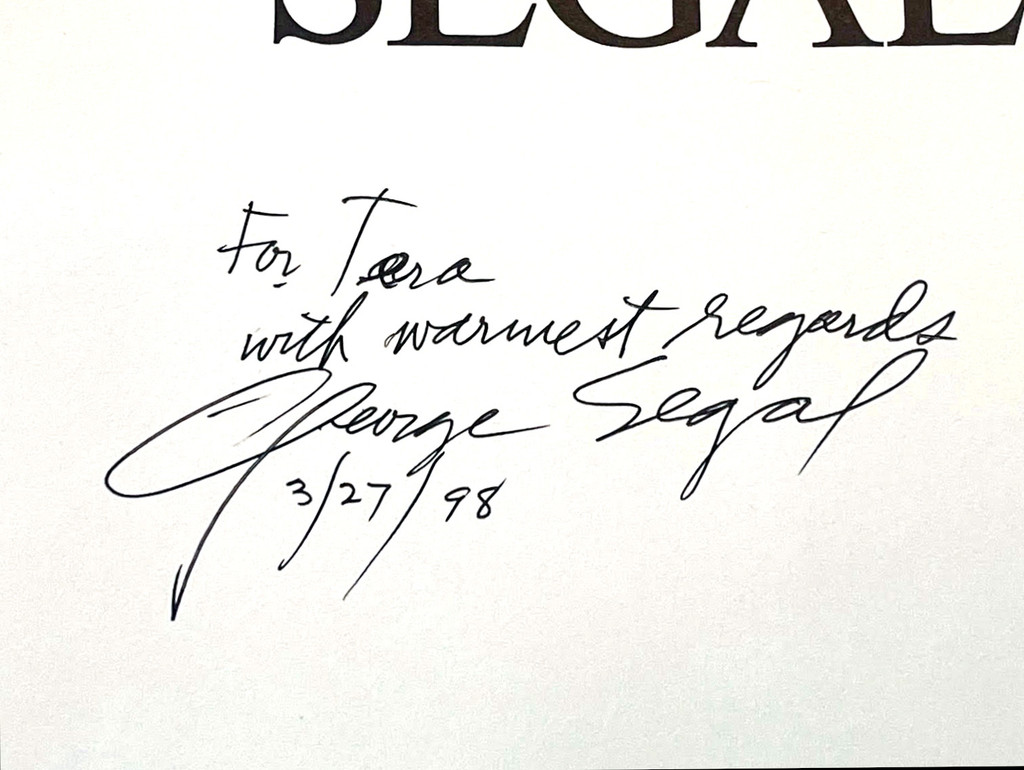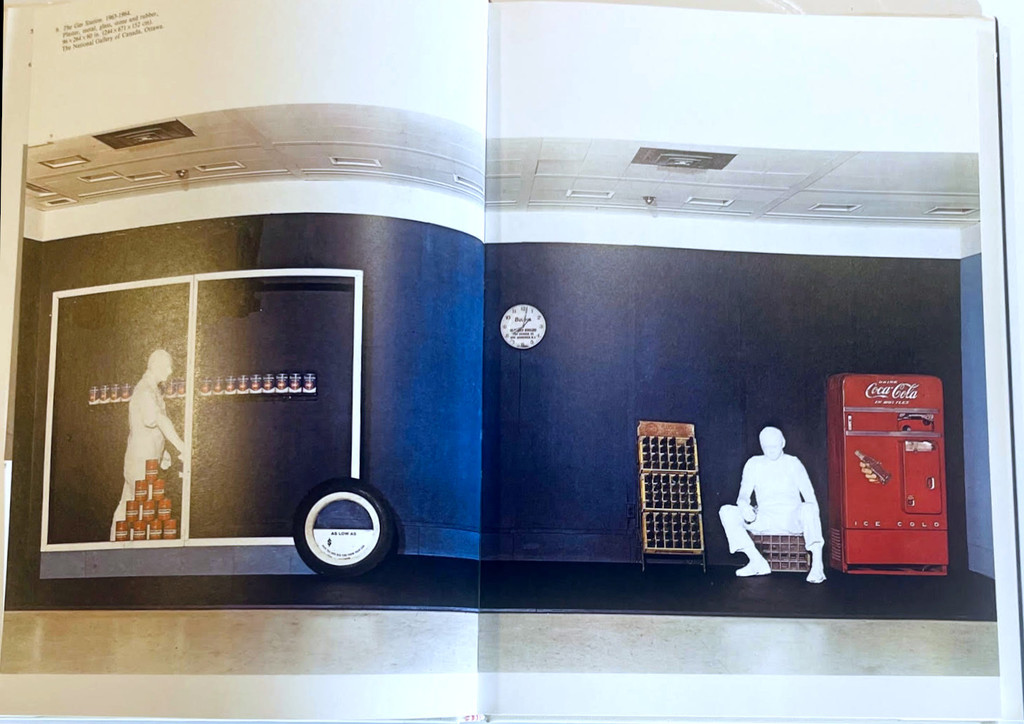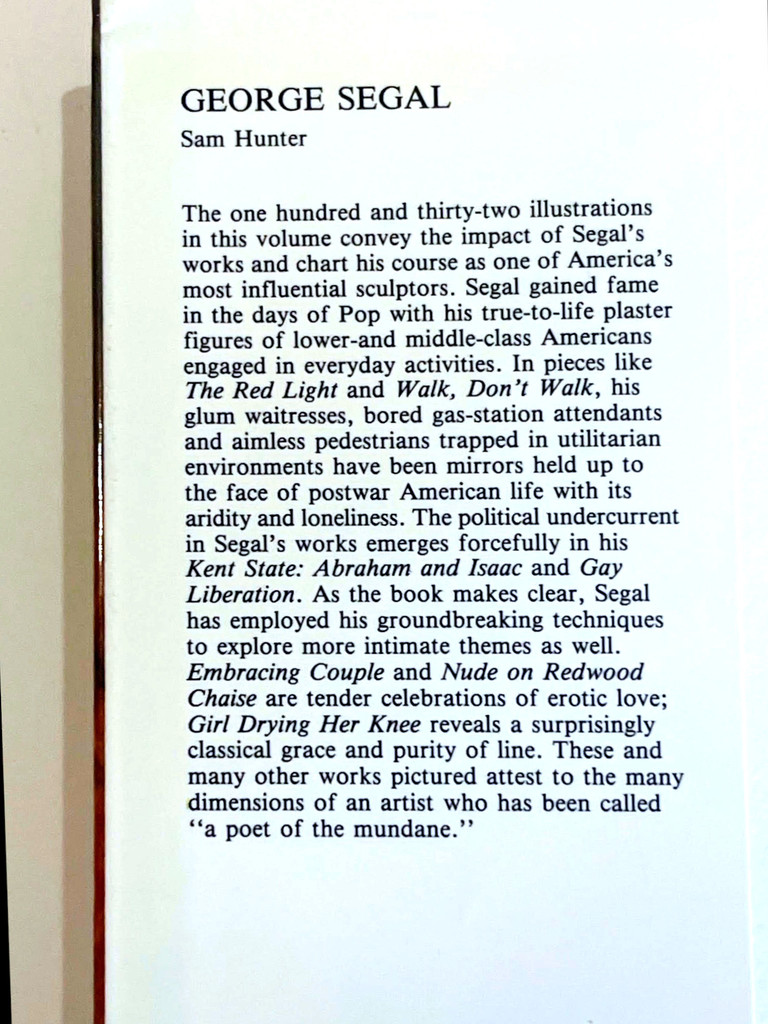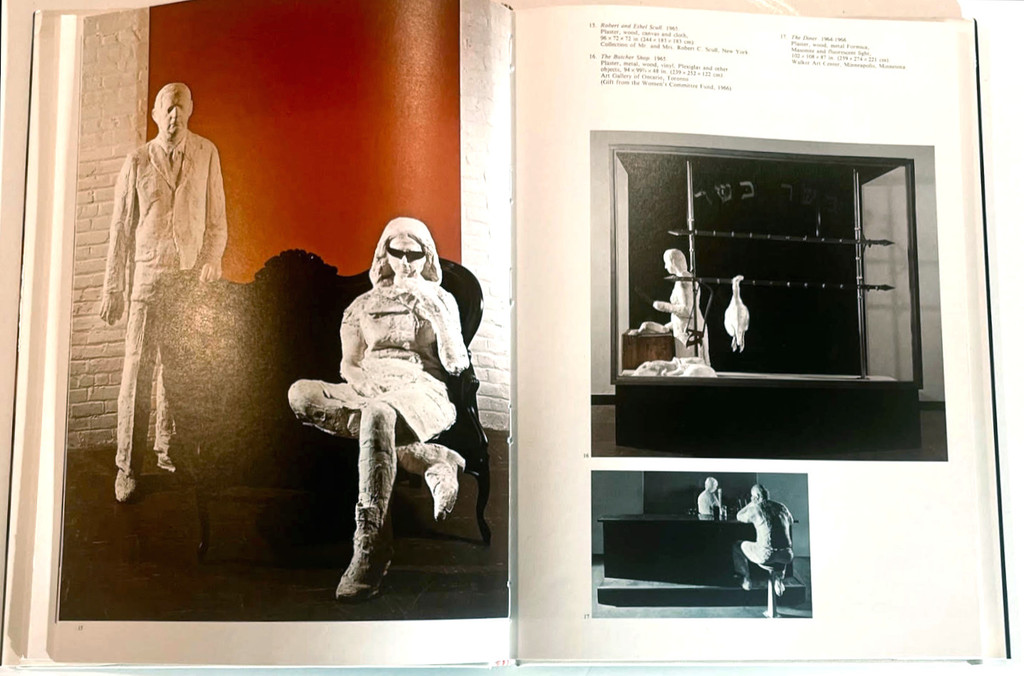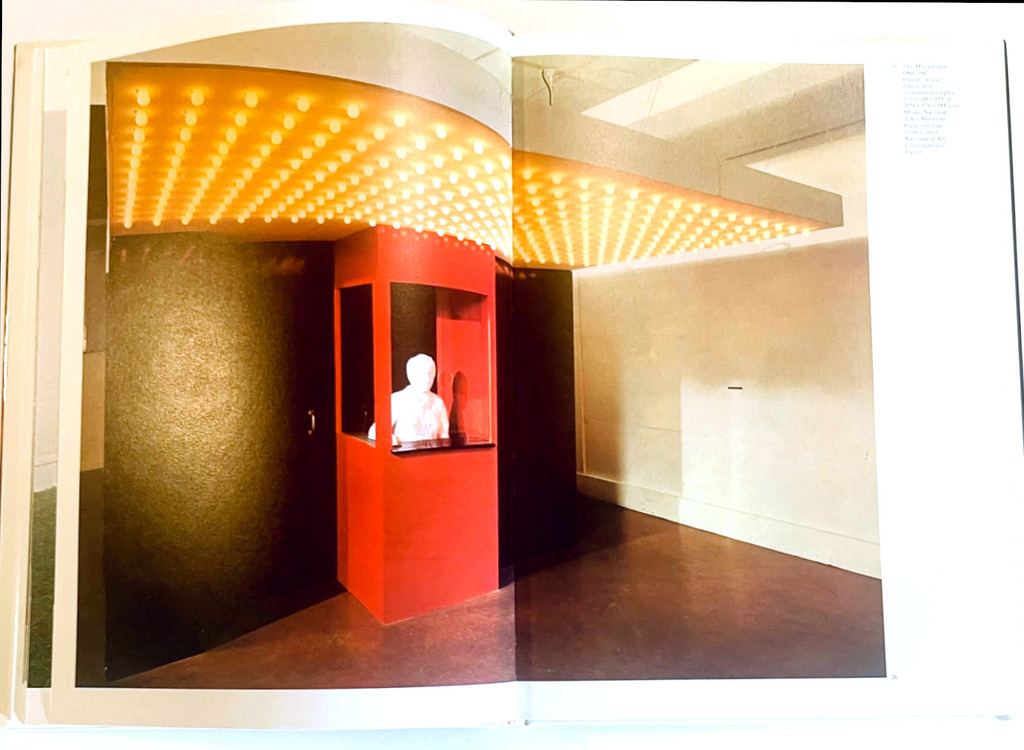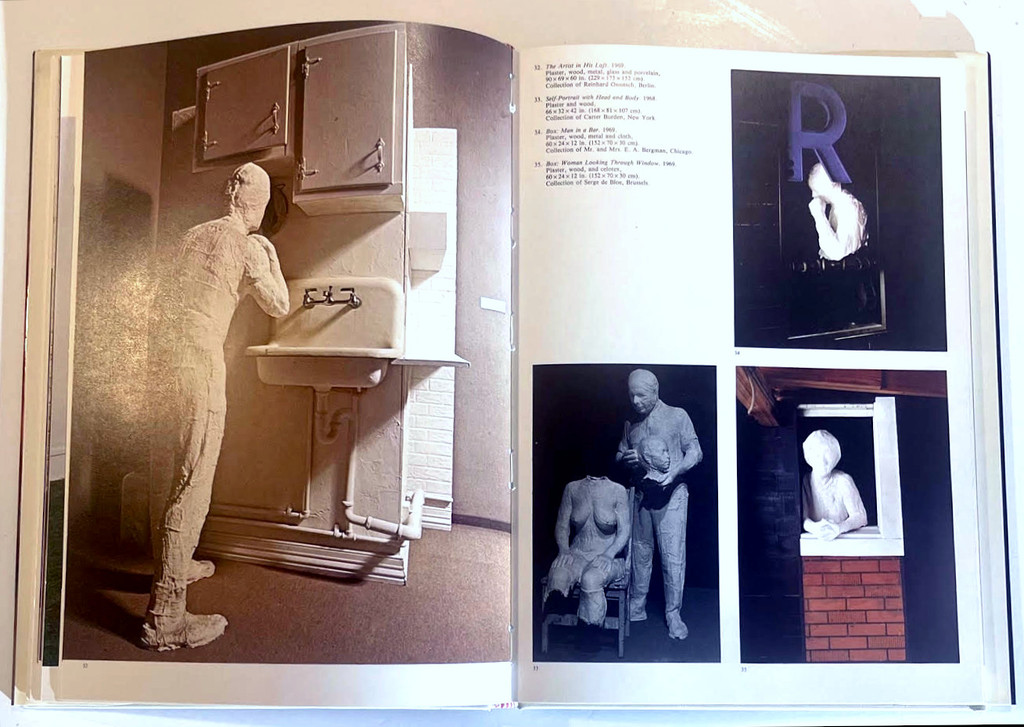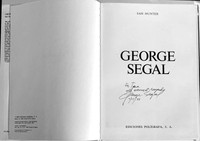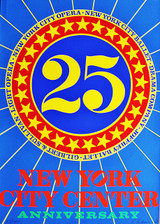
An Educated Collector is Our Best Client
In business for nearly two decades, we are a well established, popular contemporary art boutique specializing in expertly chosen, blue chip prints, multiples, uniques, books, ephemera and merchandise at different price points, with a focus on the secondary market. Please click on the "Contact Us" button at the bottom of this page for questions about any work, pricing and/or to arrange to visit our showroom/gallery - located in between Manhattan's Flatiron and Chelsea Flower Districts.
George Segal, George Segal (signed and inscribed by George Segal), 1989
CONTACT GALLERY FOR PRICE
Description
George Segal
George Segal (signed and inscribed by George Segal), 1989
Hardback monograph with dust jacket (signed, dated and inscribed for Tera by George Segal)
Warmly signed, dated 3/27/1998 and inscribed for Tera by George Segal on the title page
12 × 8 1/2 × 1 inches
Unframed
Provenance:
Signed for the previous owner on the occasion of the exhibition: GEORGE SEGAL: A
RETROSPECTIVE: SCULPTURES, PAINTINGS, DRAWINGS FEB 19–MAY 17, 1998 at the Smithsonian Institution
This lavishly illustrated 1989 hardback monograph with dust jacket was written by the renowned art historian Sam Hunter. It is warmly signed, dated 3/27/1998 and inscribed to Tera by George Segal on the title page.
Inscription reads:
For Tera
with warmest regards
George Segal
3/27/98
Provenance: Signed for the previous owner on the occasion of the exhibition: GEORGE SEGAL: A RETROSPECTIVE: SCULPTURES, PAINTINGS, DRAWINGS FEB 19–MAY 17, 1998 at the Smithsonian Institution
Book information:
Publisher: Ediciones Poligrafa, S.A, 1989
English; Hardback; 128 pages with 132 color illustrations
Publisher's blurb:
The one hundred and thirty-two illustrations in this volume convey the impact of Segal's works and chart his course as one of America's most influential sculptors. Segal gained fame in the day of Pop with his true-to-life plaster figures of lower-and middle-class Americans engaged in everyday activities. In pieces like The Red Light and Walk, Don't Walk, his glum waitresses, bored gas-station attendants and aimless pedestrians trapped in utilitarian environments have been mirrors held up to the face of postwar American life with its aridity and loneliness. The political undercurrent in Segal's works emerges forcefully in his Kent State: Abraham and Isaac and Gay Liberation. As the book makes clear, Segal has employed his groundbreaking techniques to explore more intimate themes as well. Embracing Couple and Nude on Redwood Chaise are tender celebrations of erotic love; Girl Drying Her Knee reveals a surprisingly classical grace and purity of line. These and many other works pictured attest to the many dimensions of an artist who has been called "a poet of the mundane."
More about George Segal:
George Segal was born in the Bronx, New York, on November 26, 1924. He studied science at Stuyvesant High School and then spent one year at the Cooper Union, both in New York. While still a student, he worked briefly as a commercial illustrator. After his older brother was drafted into the army in 1940, Segal left New York to work on his father's newly acquired chicken farm in South Brunswick, New Jersey. During this time he took night classes at the nearby Rutgers University, New Brunswick, where he would return much later to earn his MFA in 1963.
In 1946 Segal married Helen Steinberg and soon began commuting to classes at Pratt Institute, Brooklyn, New York. In 1948, inspired by Abstract Expressionist paintings, he transferred to New York University (NYU). Among his teachers were William Baziotes and Tony Smith, and his fellow students included Alfred Leslie and Larry Rivers. After completing his BA in Art Education from NYU in 1949, Segal built and operated his own chicken farm in South Brunswick, New Jersey, for several years with his wife. Allan Kaprow had also been a student at NYU with Segal, but the two did not meet until 1953 when Kaprow was teaching at Rutgers and living close to Segal. Segal's farm became the site for Kaprow's first Happening in 1958, a Robert Frank film in 1960, and over time, the artist's own 6,000-square-foot studio.
Through his relationship to Kaprow, Segal was introduced to the New York avant-garde scene surrounding John Cage and Merce Cunningham, as well as awarded a membership to the Hansa Gallery, where in 1956, for his debut solo show, he exhibited brightly colored, figurative abstract paintings. In 1958 Segal completed his first sculptures using wood two-by-fours, chicken wire, burlap, and plaster, and positioned the three works in front of a series of large canvases. Segal's placement of life-size figures in an environment, a trope for which he became best known, was further developed in July 1961, when he was asked to write about newly developed gauze and plaster Johnson & Johnson bandages as a potential new art material. He was given boxes of the medical material, which he took home and had his wife plaster around him while he sat in a chair. The results led him to continue using different versions of the material to make full-body plaster casts directly from the figures of his family, friends, colleagues, and patrons. These figures were then placed on the ground in relationship to ready-made objects often taken from the urban landscape. While the surfaces of his sculptures were often left white, Segal also occasionally incorporated bright hues into his pieces.
In 1960 Segal began exhibiting with Green Gallery, New York, alongside young contemporary artists such as Donald Judd and Robert Morris. Two years later his work was included in New Realists, an exhibition that helped define Pop art, a movement with which Segal had previously been identified, at the Sidney Janis Gallery, New York. He became a member of that gallery in 1965 and had his first museum solo show at the Museum of Contemporary Art, Chicago (1968).
In 1969, after making pastel drawings of plaster body parts around his studio, Segal began a series of partial figure sculptures and wall reliefs. He produced his first bronze sculpture for an outdoor project in 1976. Other public commissions included memorials to the 1970 Kent State shootings, the Holocaust, and gay liberation. In the 1990s, Segal returned to painting and began a series of photo-sculptures using his own photographs. During the last years of his life, Segal made large charcoal portraits of his friends and family, and participated in a documentary film about his life's work. The film George Segal: American Still Life premiered in 2001, a year after his death in New Jersey.
Segal's work has been recognized in numerous museum solo exhibitions worldwide, including major retrospectives at the Walker Art Center, Minneapolis (1978), which traveled to the San Francisco Museum of Modern Art (1979) and the Whitney Museum of American Art, New York (1979); the Seibu Museum of Art, Tokyo (1982), which traveled to Takanawa Museum (now Sezon Museum of Modern Art), Karuizawa (1982), Toyama-kenritsu Kindai Bijutsukan (Museum of Modern Art), Toyama (1982), Kokuritsu Kokusai Bijutsukan (National Museum of Art), Osaka (1982–83), and Ohara Bijutsukan (Ohara Museum of Art), Kurashiki (1983) (all Japan); the Montreal Museum of Fine Arts (1997–98), which traveled to the Hirshhorn Museum and Sculpture Garden, Smithsonian Institution, Washington, D.C. (1998), the Jewish Museum, New York (1998), and Miami Art Museum (1998–99); and Gosudarstvennyĭ Ėrmitazh (State Hermitage), Saint Petersburg, Russia (2002), which traveled the Jane Voorhees Zimmerli Art Museum, Rutgers University, New Brunswick, New Jersey (2002). Among many other honors, Segal was awarded the Praemium Imperiale from the Japan Art Association (1998), followed by a National Medal of the Arts from the U.S. government (the NEA) (1999). He was also the recipient of numerous honorary doctorate degrees. The George and Helen Segal Foundation helped establish the George Segal Gallery at Montclair State University, New Jersey (2006), and a traveling exhibition featuring Segal's sculpture was organized by the Madison Museum of Contemporary Art, Wisconsin (2008).
Courtesy of the Guggenheim
About Sam Hunter:
Sam Hunter was an American historian of modern art, born on January 5, 1923, and died on July 27, 2014, at the age of 91. He was an emeritus professor of art history at Princeton University, where he played a prominent role in his field for over 20 years as a professor, curator, museum director, editor, and critic. Hunter was also the founding director of the Rose Art Museum, where he built the museum's collection of modern and contemporary art. He authored over 50 books and three times that many essays, museum and gallery catalogues, and articles. Hunter worked in many capacities for Harry N. Abrams, Inc., including editor-in-chief, 1971-72. He curated and consulted for museum exhibitions at several institutions, including the Museum of Modern Art, New York, the Minneapolis Art Institute, and the Princeton Art Museum.



